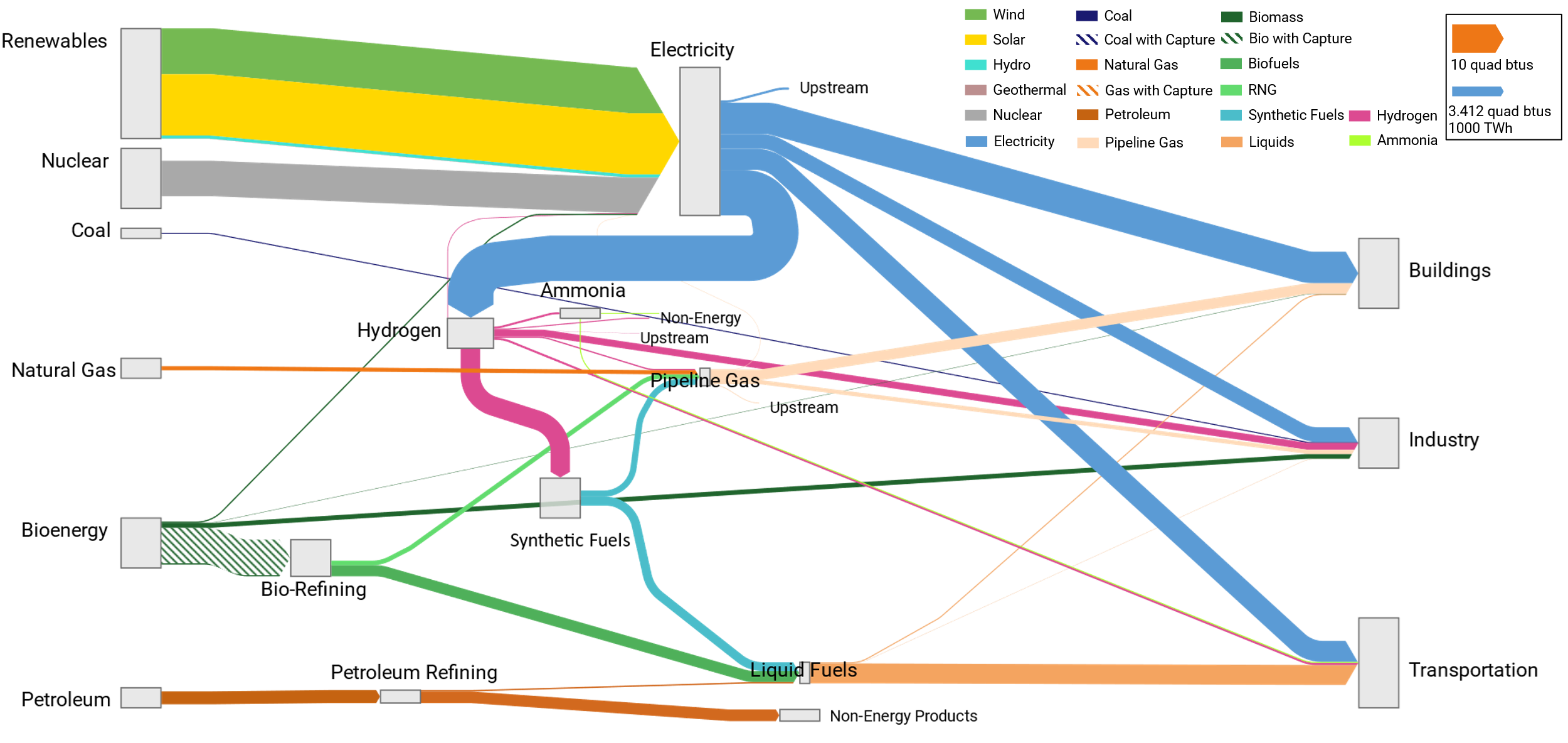Net-Zero Limited Options Scenario

In the Net-Zero Limited Options scenario, a very different configuration of the energy system emerges. This scenario is the most restrictive in terms of technology options, combining the exclusion of CCS with the more pessimistic assumptions about biomass feedstock supply. Because the lack of CCS drastically reduces the potential scope for CDR, there is a much lower use of fossil fuels and correspondingly much higher demand for low-carbon fuels, as well as increased electrification and efficiency. The decreased availability of biofuels is replaced by increased demand for hydrogen as a direct fuel—particularly in industry offsetting pipeline gas—and hydrogen-derived synthetic fuels. This scenario also includes a small amount of ammonia used as a bunker fuel for international shipping, which along with ammonia used for fertilizer is synthesized from electrolytic hydrogen. Perhaps the most significant change is the supply of hydrogen from electrolysis to meet both direct and indirect demand. The expanded role for hydrogen combined with the shift from production from gas with CCS to production from electrolysis has major implications for the scale of the electric sector, with electricity consumed for hydrogen production of over 4000 TWh, as large as total electricity demand today.
Electric generation shifts to a mix of renewables and nuclear, including 60 GW of new nuclear, although there remains a significant role for firm capacity from gas, hydrogen, and battery storage. Pipeline gas use is reduced dramatically, with supply coming from a mix of renewable natural gas (primarily via gasification of cellulosic feedstocks), synthetic natural gas, and hydrogen. Remaining demand is mainly allocated to buildings and industry, although in smaller volumes due to increased electrification and efficiency. Despite smaller volumes, capacity for gas delivery to both the power and buildings sector declines only slightly as consumption is consolidated during peak periods. Liquid fuel supply shifts to a mix of biofuels and synthetic hydrocarbons with very little petroleum. Synthetic liquid fuel—particularly jet fuel—is produced from hydrogen and carbon captured from bio-refining. Electricity’s share in final energy reaches nearly 60%, leading to increased direct demand for electricity in addition to the large increase in indirect demand for electrolysis. Figure 14 shows the economy-wide energy flows in the Net-Zero Limited Options scenario.
Even without CCS, a small amount of negative emissions are assumed to be available from natural climate solutions (such as afforestation or soil management), which can be used to balance residual positive emissions under the net-zero target. While most fossil use is replaced with electricity or low-carbon technologies and fuels, this small “budget” of allowable emissions is used to accommodate sources that are either very costly to replace or do not have non-fossil substitutes in the model. These applications include periodic use of gas-fired capacity in the electric sector, limited space heating in colder climates, some process heating in industry, and non-energy uses of petroleum. Overall, the mix of energy technologies deployed in this scenario results in a much higher incremental cost for achieving the target of net-zero CO2 emissions than in the first two scenarios, in which CDR technologies can be employed at a larger scale.